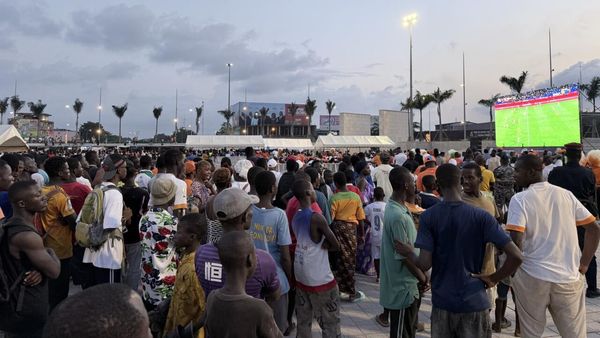
In financial markets, it is dangerous to assume the death of something because of a long period of underperformance. The gods of regression-to-the-mean usually belie such predictions within a few years.
Emerging markets, as represented by the Morgan Stanley Capital International Emerging Markets Index (MSCI-EM), have underperformed developed markets (MSCI- DM) for over 10 years now. Not adjusted for risk, the MSCI-EM’s performance, from its inception just over 30 years ago, is now the same as that of the MSCI-DM for the entire period. During the 80s, the term ‘emerging markets’ was coined by Antoine van Agtamael of the International Finance Corporation to suggest “progress, uplift and dynamism" as opposed to the stagnation that characterized the ‘Third World’, a term that fell out of favour. As the MSCI notes, “An avalanche of political and economic events, including the adoption of market-oriented policies in China, the collapse of the Soviet Union, the spread of democracy in Eastern Europe, and the fall of apartheid in South Africa, led to the rapid expansion of the emerging market universe throughout the 90s." Brazil was added in 1988, South Korea in 1992, India in 1993, China and Taiwan in 1996 and Egypt in 2001. The EM index started with 10 countries representing about 1% of the world equity index in market capitalization terms. Today, the MSCI-EM comprises 27 countries, representing almost 13% of the world equity index, signifying a steady rise over the past three decades.
The five largest countries by market capitalization weight in the MSCI-EM Index are China (34%), South Korea and Taiwan (just below 15% each), India (about 10%) and Brazil (5%). The top five companies are Taiwan Semiconductor, Tencent, Alibaba, Samsung and Meituan. South Korea, Taiwan and China have long since outgrown the World Bank’s definition of Emerging Countries (defined today as those below an annual per capita income of $4,095), as have smaller countries like Israel and Saudi Arabia. In the 80s and 90s, the biggest source of portfolio investment in these markets came from large defined-benefit plans run by US companies, such as the pension funds of General Motors and IBM. Today, the largest funds are sovereign wealth funds, like those of Abu Dhabi and Saudi Arabia, index funds like those from Vanguard and Blackrock, defined-contribution-based Canadian pension plans, like CPPIB and CDPQ, and US state funds like CALPERS.
In the same way that an avalanche of changes led to an EM revolution, an equally significant set of changes over the past two decades is obviating that classification. With economic power now split between the US and China, most large investors now participate in these markets in depth through investments in listed equity, private equity, venture capital, debt, and real estate. Large Canadian investors like CPPIB and CDPQ now have a physical presence in Asia and make direct investments in specific companies in China and India, often co-investing with major global private equity players. For instance, CPPIB recently invested $800 million in the Flipkart Group and CPPIB, CDPQ and Singapore’s GIC together own over 10% in Kotak Mahindra Bank. CPPIB’s plan to raise Asian allocation to one-third of its total fund by 2025 seeks to emphasize investments in Australia and Japan, Greater China, India and South Korea. Large investors are likely to follow a country and/or sector-specific strategy in large economies. Smaller investors are likely to follow opportunistic allocations to companies or countries.
Yet, the long period of underperformance of the EM Index has reset relative valuations to attractive levels. In a post-pandemic world, as DM central banks have opened their liquidity taps, the immediate path ahead for EM relative performance looks good. Unsurprisingly, they have garnered attention and allocation swings towards EMs are a clear 2021 trend. Against a theoretical allocation of 13% (based on the index) or 37% (based on gross domestic product), actual EM allocations still remain small, in a range of 6-8%. While we may see investment at the upper end of that range for a few years, EM allocations will likely plateau in the single digits and then gradually decline over the next few decades.
The narrative of a globalized world moving ahead in a rules-based-world for global trade set by the World Trade Organization, which formed the basis for EMs’ steady march from 1988 to 2008, has been eroded. In a post-pandemic world, worried about the implications of climate change, country-specific, asset-class-specific and sector- or even company-specific strategies are likely to dominate over index-based ideas.
The emerging market index-based idea will gradually fade. In the years ahead, it may not be unusual to see allocation frameworks for global investors that read: “The US, Greater China, Japan, Europe (including the UK and Switzerland), South Korea, Other Asia & Other." This may dovetail with a sector framework for financial services, consumer products, technology and biologics/healthcare, creating a sort of country/sector matrix. This matrix-allocation approach could appropriately address dominant global companies in each sector. For India, over the next few decades, this will be a chance to shine individually and not be a small part of a small allocation basket.
P.S: To paraphrase Victor Hugo, not even the most powerful can forestall the death of an idea whose time has come and gone.
Narayan Ramachandran is chairman, InKlude Labs. Read Narayan’s Mint columns at www.livemint.com/avisiblehand







